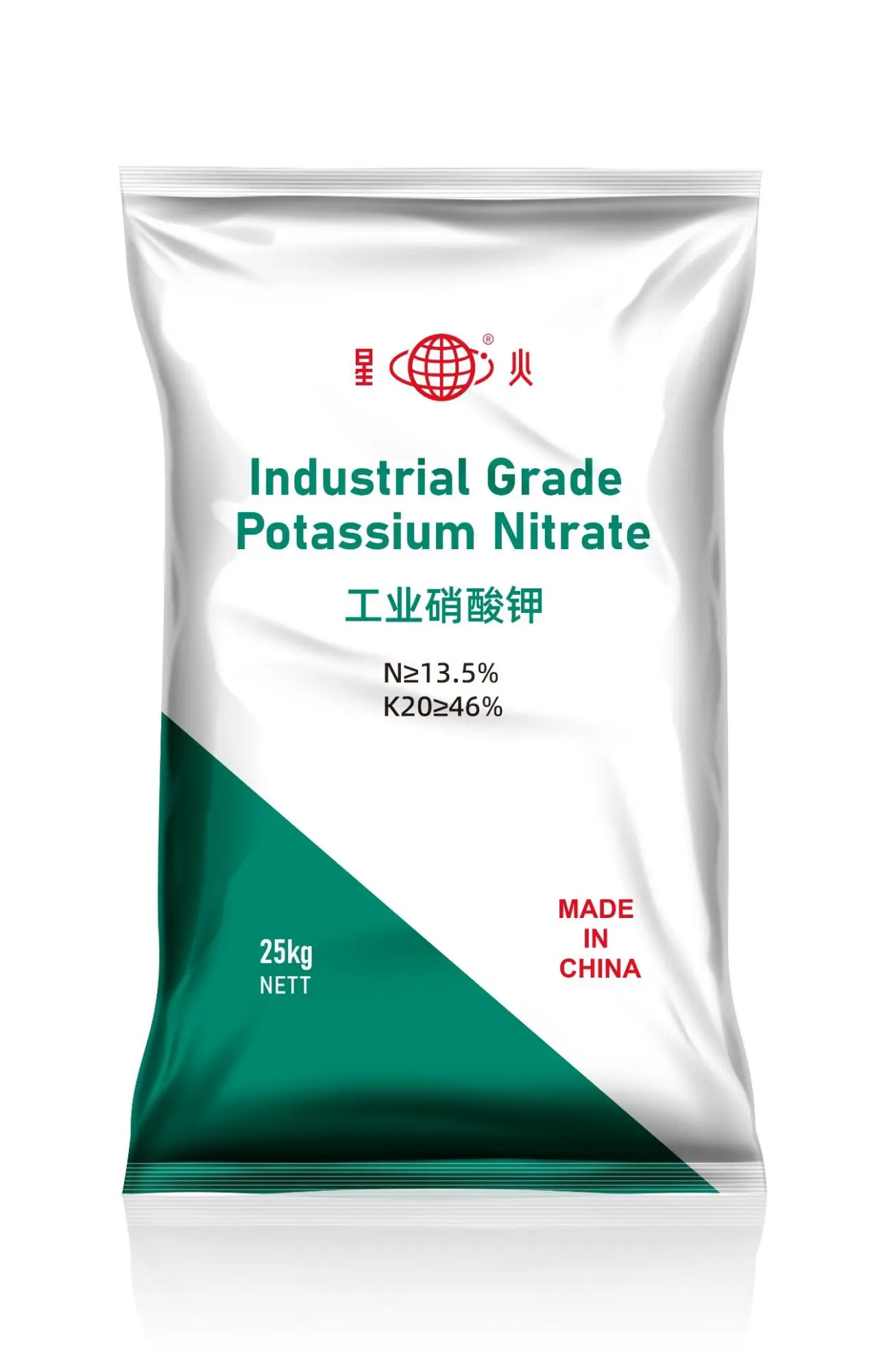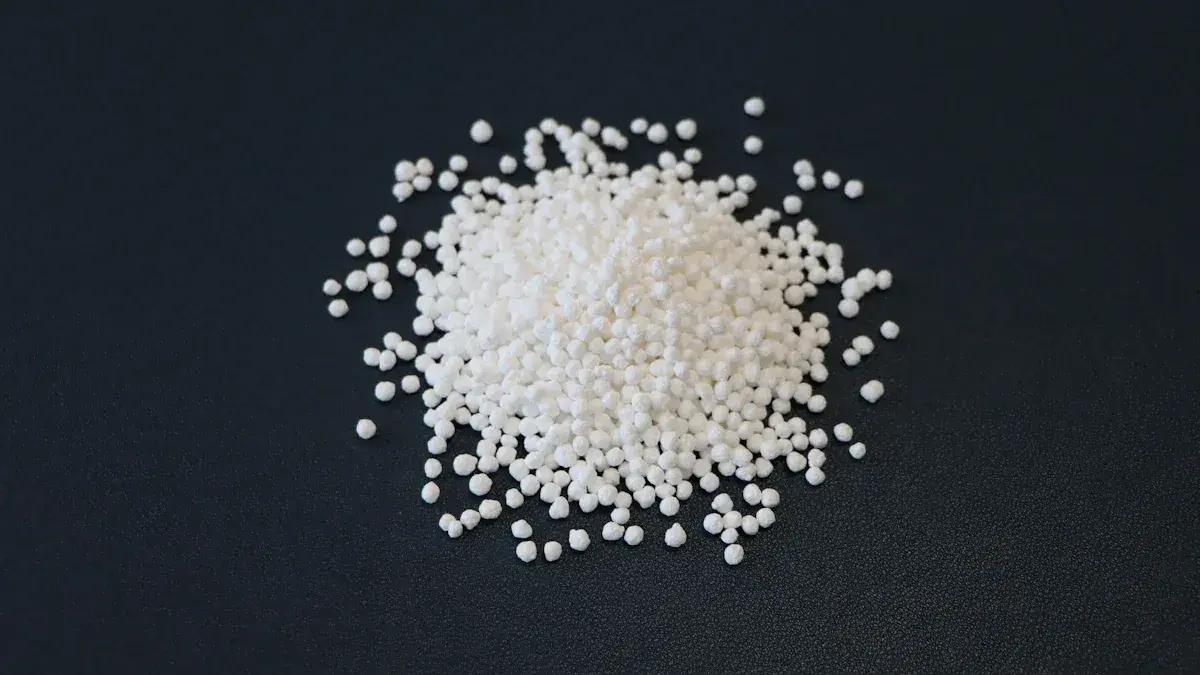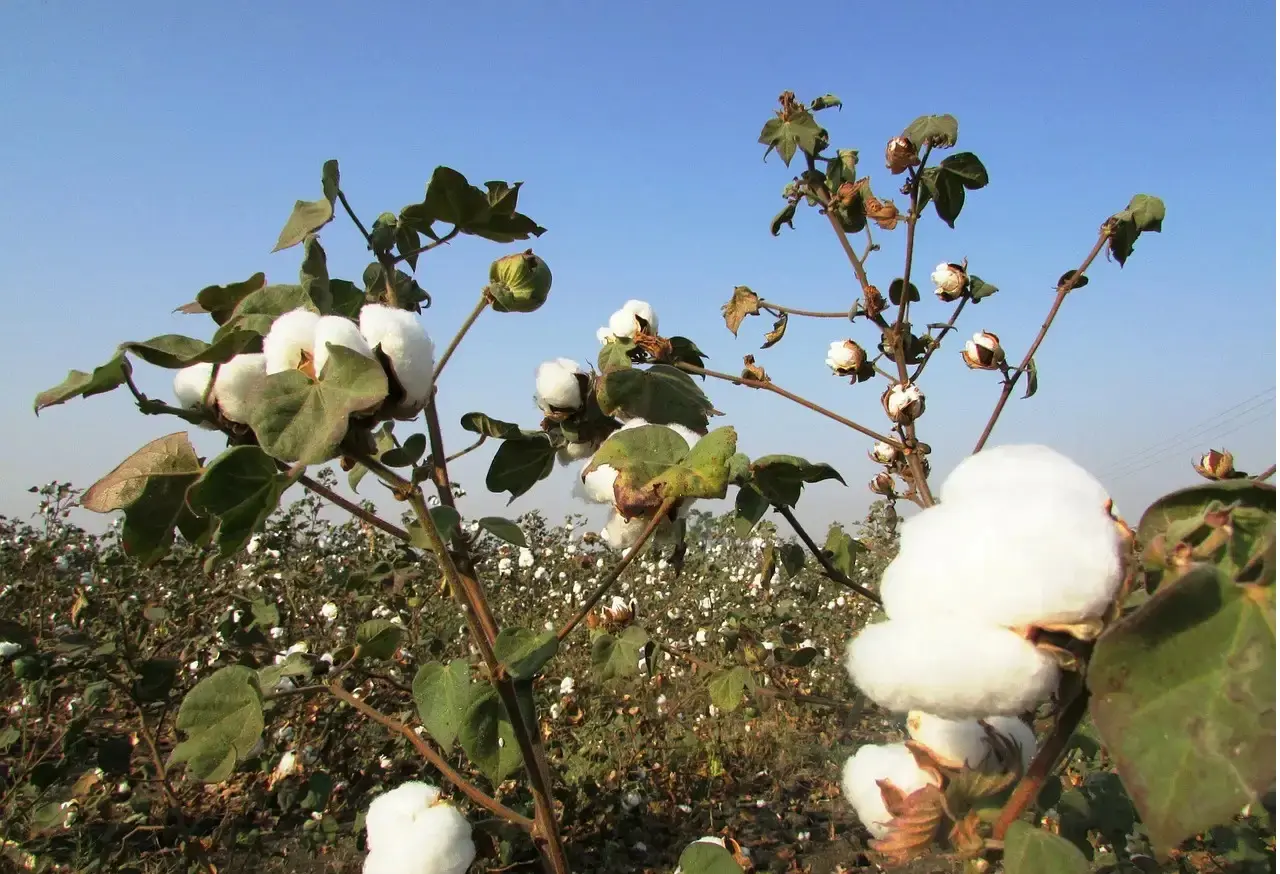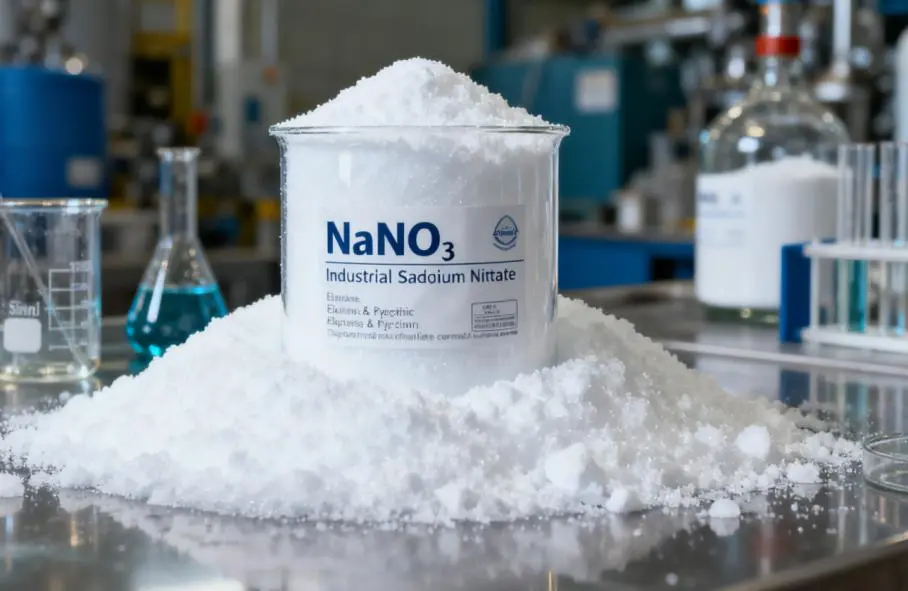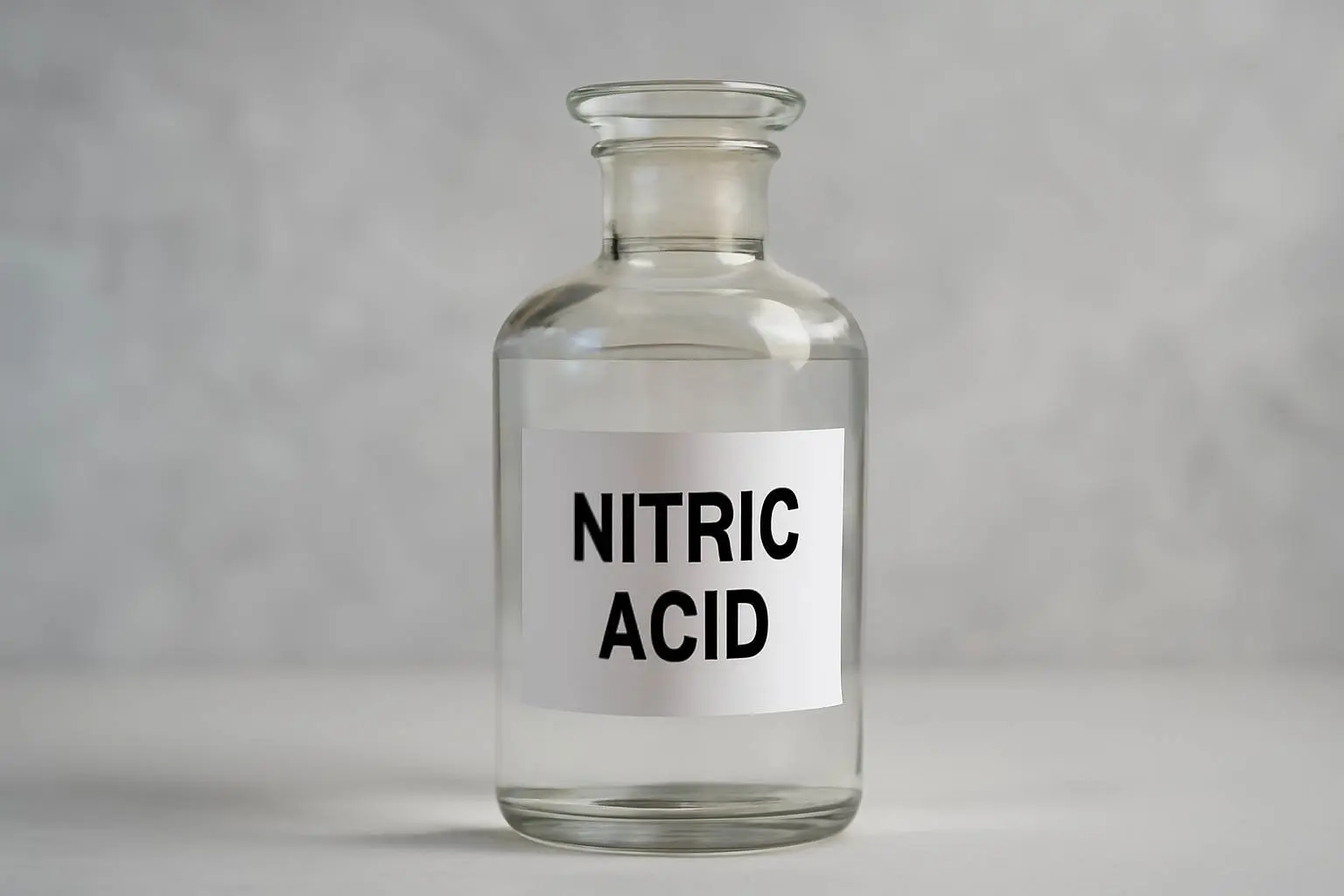Calcium Nitrate: Dual Benefits of Calcium and Nitrogen for Stronger Crops
Calcium nitrate is an inorganic compound valued for its high solubility and dual nutrient content. It is a versatile material critical to modern agriculture, industrial processes, and construction technology.
Calcium provides essential structural support to plant cell walls. Because it does not move easily within the plant, a steady supply of calcium is necessary for healthy development. Applying calcium nitrate regularly results in higher-quality, firmer produce. The nitrogen in the fertilizer drives protein production and leafy growth, while the calcium helps plants withstand stress. This is especially important for preventing calcium deficiency in crops like celery during periods of heat and drought.
1. BasicInformation
- Chemical Name: Calcium Nitrate
- Synonym:Nitric acid, calcium salt
- Chemical Formula:Ca(NO₃)₂
- Common Forms:
- Calcium Nitrate Tetrahydrate [Ca(NO₃)₂·4H₂O]:The most common form; white, hygroscopic crystals.
- Anhydrous Calcium Nitrate:White granular solid.
- CAS Number:13477-34-4 (Tetrahydrate)
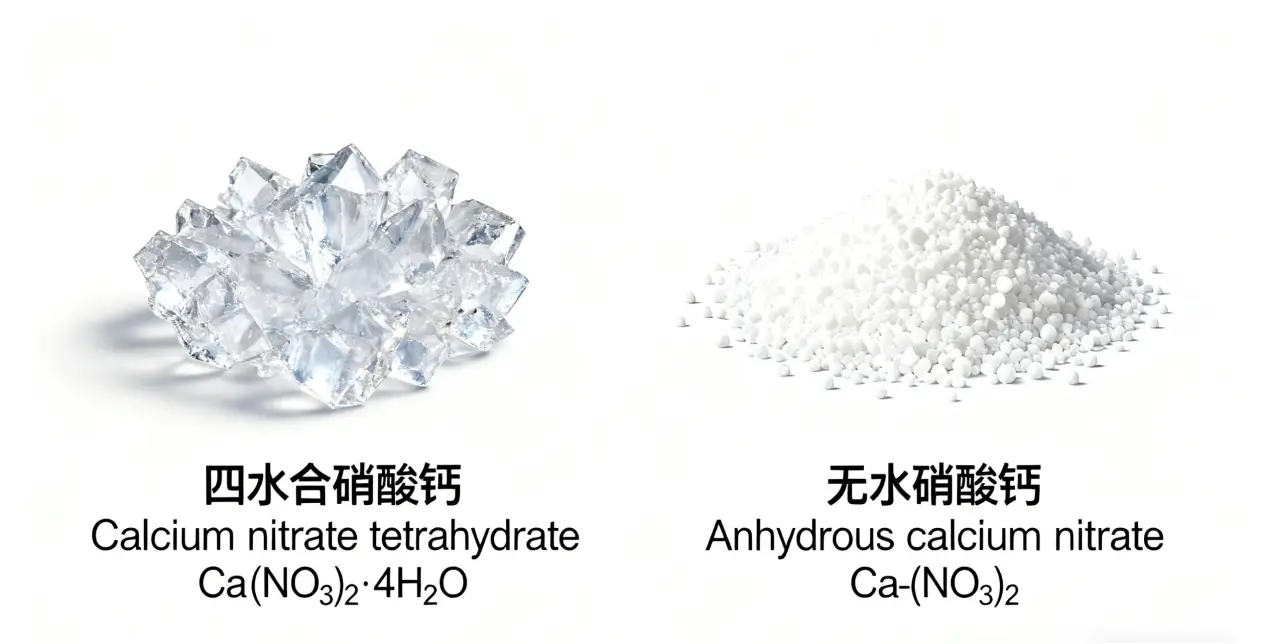
2. Key Characteristics
- High Solubility: Extremely soluble in water, providing rapid availability of ions.
- Hygroscopicity:Highly absorbent of atmospheric moisture, requiring airtight packaging to prevent caking and liquefaction (deliquescence).
- Oxidizing Properties:Acts as a mild oxidizer. May intensify fire if involved in a combustion scenario.
- Dual Nutrient Source:Provides both water-soluble calcium (Ca²⁺) and nitrate nitrogen (NO₃⁻).
- Endothermic Reaction:Dissolving in water causes a cooling effect.
- Low Freezing Point:Concentrated aqueous solutions have cryoscopic properties, useful as anti-freeze agents.
3. Manufacturing Processes
- Primary Method (Lime Neutralization):Reacting nitric acid (HNO₃) with calcium carbonate (limestone, CaCO₃) or calcium hydroxide [Ca(OH)₂]. The resulting solution is evaporated, crystallized, and dried.
-
Secondary Method (By-Product Recovery): Recovered and purified from the waste streams of Nitrophosphate Fertilizer production. This is a cost-effective but lower-purity source.
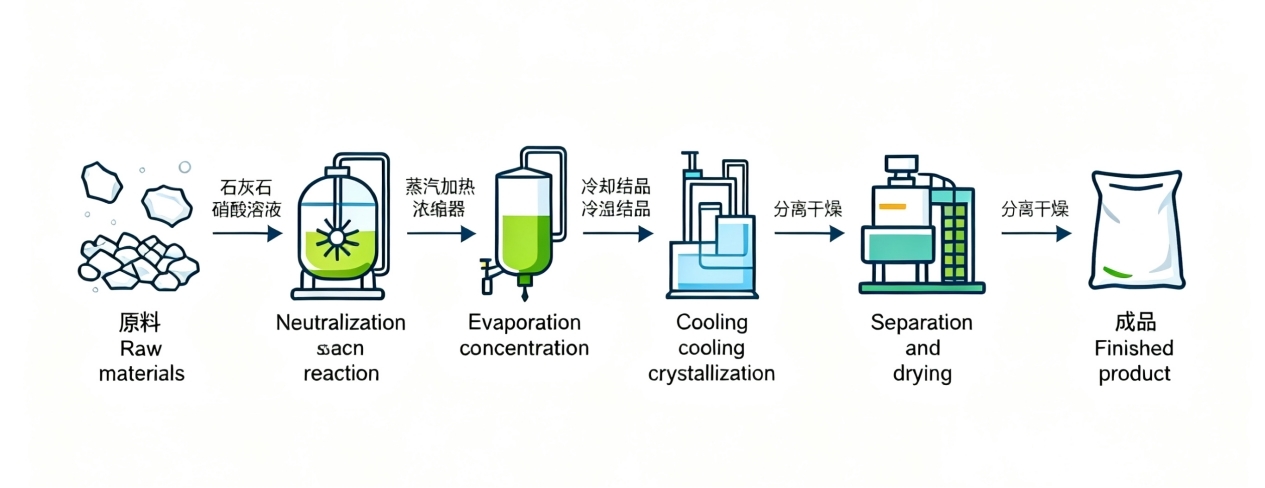
4. Storage & Handling
- Storage Conditions:Store in a cool, dry, and well-ventilated area. Maintain low humidity to prevent moisture absorption.
- Packaging:Must be sealed in moisture-proof packaging (e.g., polyethylene-lined bags or drums).
- Segregation:Store separately from combustible materials, reducing agents, and strong acids.
5. Transportation & Safety
- Hazard Classification: Classified as an Oxidizing Agent (UN 1454).
- Packaging Labeling:Packages must be clearly marked with "OXIDIZER" and "KEEP DRY."
- Handling:Avoid dust formation and prevent packaging damage. Do not transport with incompatible materials.
- Personal Protective Equipment (PPE):Use appropriate gloves, safety glasses, and dust masks during handling.
6. Primary Applications
- Agriculture (Primary Market):
- Fertilizer:A fast-acting source of readily available calcium and nitrogen for fertigation, foliar feeding, and soilless cultivation. Corrects calcium deficiencies like blossom-end rot in tomatoes.
- Industrial:
- Rubber Industry: Essential coagulant in the production of dipped latex goods (e.g., gloves, balloons). Ensures even gel formation on molds.
- Construction: Used as a non-chloride set accelerator and anti-freezing admixture in concrete.
- Wastewater Treatment:Precipitates fluoride and phosphate ions.
- Cooling Baths:Used in laboratory settings for low-temperature reactions.
- Other Uses:Chemical intermediate in explosives and pyrotechnics.
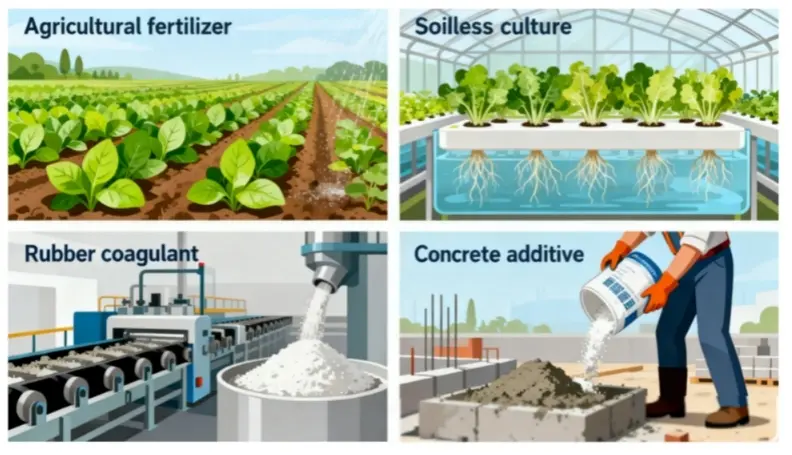
What Yongchang offer?
✅ Certified to ISO 9001/14001 and REACH standards
✅ Customized packaging and logistics solutions
✅ Purity ≥99.0%, extremely low impurities
✅ Annual production capacity of 20,000 tons
How to buy Calcium Nitrate in Yongchang?
Achieve balanced cell growth and fuel vigorous leaf development with the potential of Calcium Nitrate.
Contact our industry specialists to discover more.


